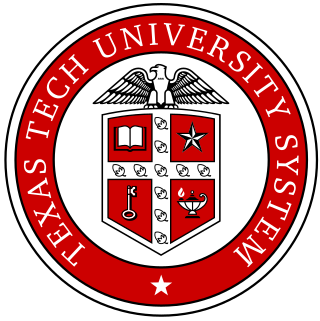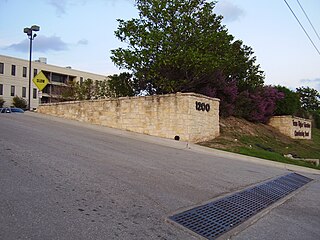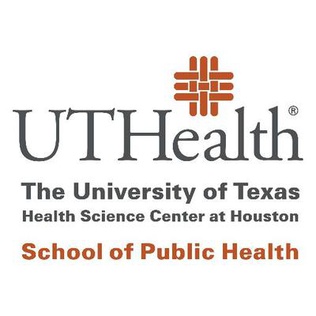The University of Texas Southwestern Medical Center is a public academic health science center in Dallas, Texas. With approximately 23,000 employees, more than 3,000 full-time faculty, and nearly 4 million outpatient visits per year, UT Southwestern is the largest medical school in the University of Texas System and the State of Texas.
The University of Texas Health Science Center at Houston (UTHealth) is a public academic health science center in Houston, Texas, United States. It was created in 1972 by The University of Texas System Board of Regents. It is located in the Texas Medical Center, the largest medical center in the world. It is composed of six schools: McGovern Medical School, The University of Texas MD Anderson Cancer Center UTHealth Graduate School of Biomedical Sciences, UTHealth School of Dentistry, Cizik School of Nursing, UTHealth School of Biomedical Informatics and UTHealth School of Public Health.

UT Health San Antonio is a public academic health science center in San Antonio, Texas. It is part of the University of Texas System.

The University of Arkansas for Medical Sciences (UAMS) is a public health sciences university in Little Rock, Arkansas. It is part of the University of Arkansas System and consists of six colleges, seven institutes, several research centers, a statewide network of community education centers, and the UAMS Medical Center.
UConn Health is a healthcare system and hospital, and branch of the University of Connecticut that oversees clinical care, advanced biomedical research, and academic education in medicine. The system is funded directly by the State of Connecticut and the University’s financial endowment. Its primary location, UConn John Dempsey Hospital, is a teaching hospital located in Farmington, Connecticut, in the US. In total, UConn Health comprises the hospital, the UConn School of Medicine, School of Dental Medicine, and Graduate School. Additional community satellite locations are located in Avon, Canton, East Hartford, Putnam, Simsbury, Southington, Storrs, Torrington, West Hartford, and Willimantic, including two urgent cares in both Storrs and Canton. Uconn Health also owns and operates many smaller clinics around the state that contain UConn Medical Group, UConn Health Partners, University Dentists and research facilities. Andrew Agwunobi stepped down as the CEO of UConn Health in February 2022 after serving since 2014 for a private-sector job. Bruce Liang is UConn Heath's interim CEO for 2022-2024 and remains dean of the UConn School of Medicine. Andrew Agwunobi returned to UConn Health as Executive Vice President of Health Affairs and CEO beginning May 31, 2024.
The University of North Texas Health Science Center is a public academic health science center in Fort Worth, Texas. It is part of the University of North Texas System and was founded in 1966 as the Texas College of Osteopathic Medicine, with its first cohort admitted in 1970. UNT Health Science Center consists of six schools with a total enrollment of 2,329 students (2020–21).

The Texas Tech University Health Sciences Center (TTUHSC) is a public medical school based in Lubbock, Texas, with additional campuses in Abilene, Amarillo, Dallas, and the Permian Basin. TTUHSC serves more than 100 counties in the western portion of Texas. The university is a separate institution from Texas Tech University; both universities are among five universities that are part of the Texas Tech University System. Texas Tech University Health Sciences Center El Paso, founded in 1969 as a branch campus of TTUHSC, became a separate institution in 2013.
Western University of Health Sciences (WesternU) is a private medical university in Pomona, California. With an enrollment of 3,724 students (2022–23), WesternU offers more than twenty academic programs in multiple colleges. It also operates an additional campus in Lebanon, Oregon.

The Texas Tech University System is a public university system in Texas with five member universities. Headquartered in Lubbock, Texas, the Texas Tech University System is a nearly $3 billion enterprise focused on advancing higher education, health care, research, and outreach with approximately 21,000 employees, more than 63,000 students, nearly 400,000 alumni and an endowment valued at $1.7 billion. In its short history, the TTU System has grown tremendously with 24 academic locations statewide and internationally.

Texas Tech University Health Sciences Center El Paso is a public university focused on the health sciences and located in El Paso, Texas. It was founded in 1969 as a branch campus of the Texas Tech University Health Sciences Center and became a separate institution in 2013.

The Michigan State University College of Human Medicine (MSUCHM) is an academic division of Michigan State University (MSU) that grants the Doctor of Medicine (MD) degree, emphasizing patient-centered care and a biopsychosocial approach to caring for patients. Required courses at the college reinforce the importance of ethics and professionalism in medicine. In 2013, U.S. News & World Report ranked the college 46th for primary care. The college was also ranked for family medicine and rural medicine. More than 4,000 M.D.s have graduated from the college. Pre-clinical campuses are located on MSU's main campus in East Lansing, Michigan and in downtown Grand Rapids, Michigan, while the clinical rotations are at seven community campuses located throughout Michigan.

William Beaumont Army Medical Center is a Department of Defense medical facility located in Fort Bliss, Texas. It provides comprehensive care to all beneficiaries including active duty military, their family members, and retirees. The hospital is located in the Central/Northeastern part of El Paso, and provides emergency department services for Northeast El Paso. The current 1.1-million-square-foot, 6-building medical complex opened July 10, 2021, on East Fort Bliss. WBAMC is affiliated with the Paul L. Foster School of Medicine which is also located in El Paso, Texas. WBAMC is also a participating hospital for medical residents from the Uniformed Services University of the Health Sciences (USU) and nursing students from the University of Texas at El Paso School of Nursing and the El Paso Community College Nursing School.

Texas has over 1,000 public school districts—all but one of the school districts in Texas are independent, separate from any form of municipal or county government. School districts may cross city and county boundaries. Independent school districts have the power to tax their residents and to assert eminent domain over privately owned property. The Texas Education Agency (TEA) oversees these districts, providing supplemental funding, but its jurisdiction is limited mostly to intervening in poorly performing districts.

University Medical Center of El Paso is a non-profit public hospital in El Paso, Texas. University Medical Center is licensed by the State of Texas and accredited by the Joint Commission. Since the early 1990s, the White House has designated Thomason as the hospital where the President, Vice President and former Presidents of the United States will be treated should they require medical care while traveling in the region. University Medical Center also provides financial assistance to people in need. Free or discounted healthcare services are available to El Paso County residents who meet eligibility guidelines.

The UTHealth School of Public Health is one of six component institutions of the University of Texas Health Science Center at Houston.
Paul L. Foster is an American businessman who is the CEO of Franklin Mountain Investments. He is the founder and former chairman of Western Refining, a Fortune 200 and Global 2000 oil refiner and marketer based in El Paso, Texas.

The Texas Tech University Health Sciences Center School of Medicine is the medical school of Texas Tech University Health Sciences Center (TTUHSC). TTUHSC SOM was originally chartered in 1969 to train more physicians for the underserved populations of the West Texas region. As of 2011, the School of Medicine has awarded over 4,000 Doctor of Medicine degrees. The school offers the traditional four-year curriculum, as well as an accelerated three-year track, and joint degree programs with Texas Tech University.
John Charles Baldwin was an American cardiac surgeon and academic administrator. He served as the surgery department chairman at Baylor College of Medicine, as dean of Dartmouth College's Geisel School of Medicine, as president and CEO of the Harvard Immune Disease Institute, and as president of the Texas Tech University Health Sciences Center.
Tedd L. Mitchell is an American academic. He is the fifth chancellor of the Texas Tech University System. He is also the chairman for the Board of Trustees of the Cooper Institute, a Dallas-based health and wellness system founded by Kenneth H. Cooper.
Patient simulator in the Advanced Teaching and Assessment in Clinical Simulation(ATACS)Center.















